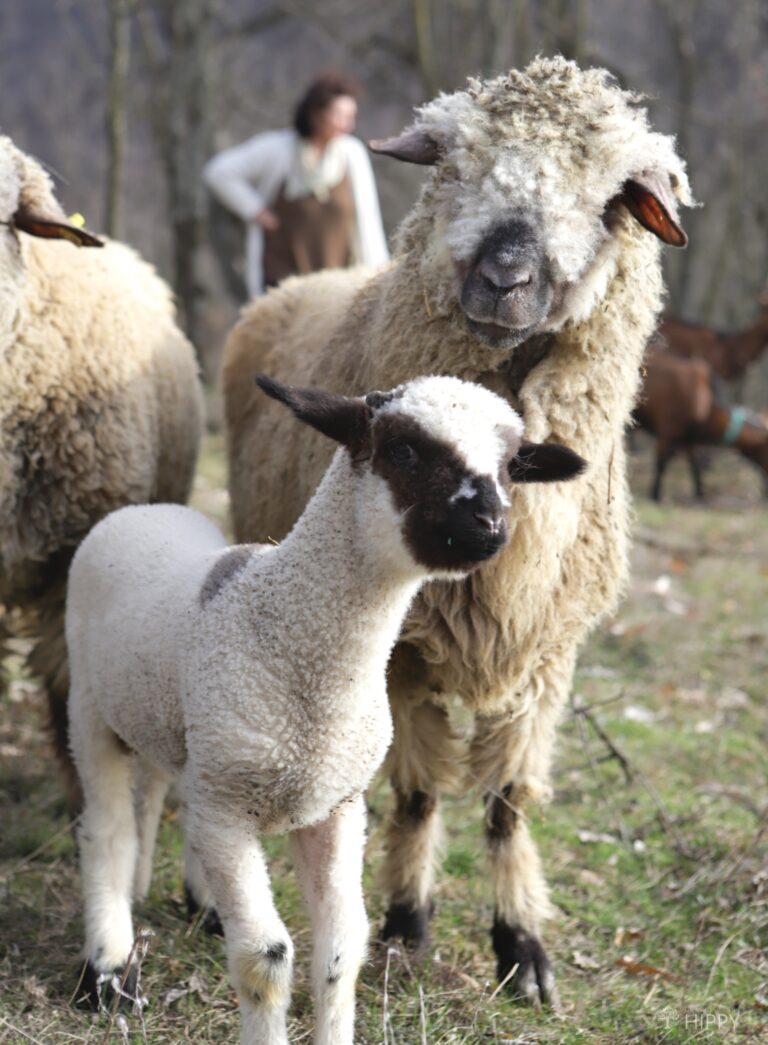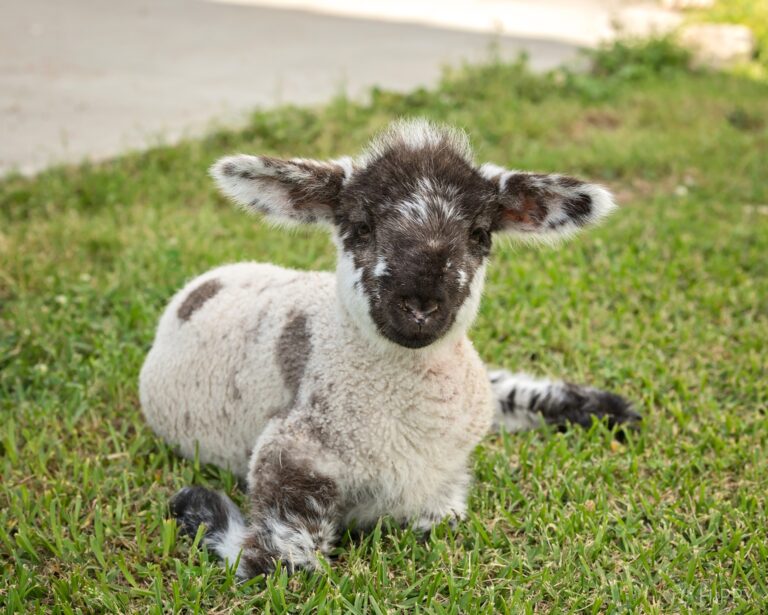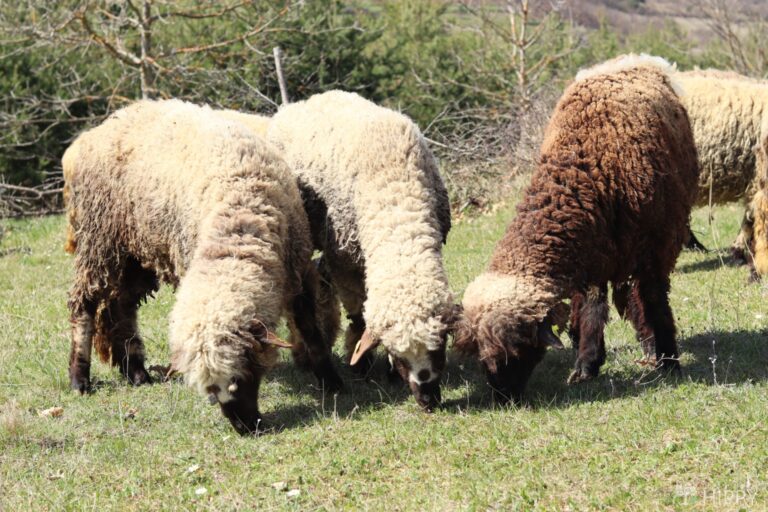Livestock lingo is something that confuses plenty of people, sometimes even folks who have worked with these animals for a little bit.
For instance, let’s look at sheep. There’s no doubt you know what sheep are, and you certainly have heard the term lamb used before. But do you know the real differences between lambs and sheep?

Is a lamb just a baby sheep? What qualifies a sheep as an adult? There’s more to learn than you might think, and you’ll find the answers to these questions and many more just below in this article.
Lambs are Young Sheep
It’s best to begin with the basics. Lambs are really just baby sheep. Or rather I should say that they are young sheep.
Most of us think of a lamb as an infant, a tiny sheep with a perfectly white fleece that is as soft and white as snow. That’s true, but the official terminology for lamb actually denotes any sheep that is younger than 1 year old.
Basically, a lamb can still be showing all the signs of adulthood and physical maturity and still be, properly, classed as a lamb.
This can make things a little bit confusing when you’re talking about a sheep with the expectation of what you’re getting. If you hear the term lamb and think of a brand-new baby, you might be in for a surprise!
For this reason, it’s always best to ask the age of the lambs if they aren’t in front of you so you’ll know what you’re dealing with. This terminology even extends to the meat produced by sheep, with there being different cutoffs for the age at slaughter if meat is going to be sold as lamb.

Lambs are Much More Reserved Than Adult Sheep
Everyone knows that sheep are flock animals, and travel around in big groups with each being greatly influenced by the attitude and actions of the others.
But sheep are also highly intelligent and have a great memory for faces, meaning that if you treat them right and have raised them, your sheep will recognize you and generally come up to you and be friendly with you.
Not so with most lambs. Unless you’ve raised and hand-fed them yourself, turning them into bottle babies, lambs tend to be standoffish, skittish, and wary of people until they grow up a little bit.
That’s because, as with most young animals, they instinctively understand they are absolutely at the bottom of the food chain and are wary of threats and predators, including people.
But in time, they will learn the cues from other adult sheep in the flock, especially their mothers while they are with them, and grow to trust you.
Lambs Subsist Entirely on Milk Their First Days of Life
Lambs are just like pretty much every other baby animal in that they’re born totally dependent on their mother’s milk for the calories and nutrition they need to survive. In fact, lambs really do drink nothing but milk for sustenance for the first couple of weeks of life.
They are considered herbivores like their parents, and during this time they might take the tiniest exploratory nibbles of grass or other plant matter, but they are unable to digest it at this early phase of life.
In fact, it takes time for their digestive tract to develop fully so that they can start switching over to solid foods and, eventually, give up milk entirely.
Although it won’t really be a problem on your homestead, this is one of the biggest problems facing lambs out in the wild or if they are left to roam around and graze on large pastures as part of a flock…
If a young lamb is rejected by its mother, or somehow gets separated from her, it won’t be able to eat and get nutrition even though it is surrounded by things that are nominally edible to it!
Lambs Don’t Grow Any Teeth for Several Weeks
And speaking of eating, lambs don’t even have teeth when they’re born. Rather I should say they don’t have the teeth they need to chew food. Baby lambs have small, smooth, half-sized teeth referred to as milk teeth, and they are good only for clamping onto their mother’s udder to suckle.
As mentioned above, this is a big problem for baby lambs if they’re unable to get milk from their mother or from another source, such as being bottle-fed. Even if they desperately try to eat grass or some other food, they won’t be able to chew it with these tiny teeth.
Luckily, it does not take too long for a lamb’s adult teeth to start coming in, a process that usually begins between 4 and 6 weeks of age.
Something else to note is that these teeth don’t come in all at once, giving young lambs that are heading into maturity a snaggletoothed appearance!

Sheep Wool is Coarser Than Lambs’ Wool
Most people know instinctively that lambswool is incredibly soft, plush, and silky. And they’d be right! It really is. However, the wool of an adult sheep, though incredibly useful for all sorts of fabrics and garments, doesn’t feel quite so soft while it’s still on the sheep.
The wool of adult sheep is invariably coarse, bristly, and wiry, though its physical characteristics can vary considerably depending on the breed. The superior qualities of lambswool mean that it is, of course, a special product owing to the fact that it doesn’t stay so nice for very long.
If lambswool is going to be harvested, it must be done quickly and generally only one shearing will be possible before a young lamb starts to develop its adult wool as it ages.
Adult Sheep are Much Bigger than Lambs
This one seems obvious, but it bears explanation. Sheep are much bigger than the lambs they start out as.
Of course, there are some differences between breeds, but as a rule of thumb, expect a stocky, mature adult sheep to weigh anywhere from 180 to 220 pounds. Note that many are significantly lighter, and some are a whole lot heavier!
This is a marked contrast to a newborn lamb, though, which can weigh as little as 8 lbs or as much as 14 or even 15 pounds. That’s still tiny compared to an adult sheep!
But, as with all babies, they don’t stay that small for long: lambs will be adolescents and dramatically bigger in three or four months, and almost entirely physically mature in 6 to 8 months.
When a lamb is 11 months old, you’ll have to remind yourself that they are still indeed called a lamb; they will look just like an adult sheep!
Only Adults Have Horns
Some sheep have horns, and some don’t. Some breeds will develop horns depending on the individual sheep, while others won’t, and this includes males and females.
But, one thing that all horn-bearing breeds have in common is that those horns only come in well after they are born and start to mature.
Lambs will never be born with horns. Their genetics will determine if they grow horns as they develop, but they won’t show any signs of them while they are precious and young.
At around a month of age, if a lamb is destined to get horns, tiny bumps, known as buds, will start to develop on top of their head. Slowly, but surely!
Once they’re about a year old and properly called sheep, their horns might be ready to start growing properly, but in some breeds, not even then.
Mutton and Lamb Meat Aren’t Strictly the Same Thing
Have you ever heard of mutton? That’s just a special term for sheep meat. If you live in the United States, you might not be familiar with the term, and that’s because, confusingly, most sheep meat is referred to as lamb.
I hate to break it to you, but lamb meat, actual lamb meat, comes from lambs. As we learned, this means sheep that are under a year old, but some very young lamb, known as spring lamb, comes from sheep that are no older than 3 months.
As a rule, the difference between the two grades of sheep meat is readily apparent: lamb is tender, succulent, and has a clean, bright flavor.
Mutton, taken from adult sheep, tends to be tough and has a gamey flavor that lots of folks find distinctly unpleasant. If you want a superior dining experience, lamb is what you want.
Tim is a farm boy with vast experience on homesteads, and with survival and prepping. He lives a self-reliant lifestyle along with his aging mother in a quiet and very conservative little town in Ohio. He teaches folks about security, prepping and self-sufficiency not just through his witty writing, but also in person.
Find out more about Tim and the rest of the crew here.
